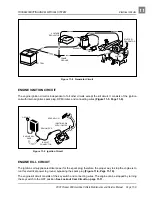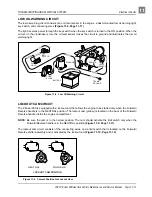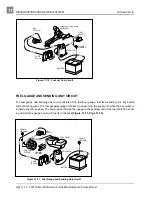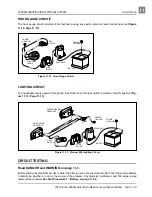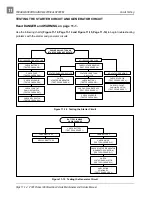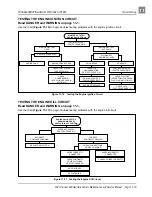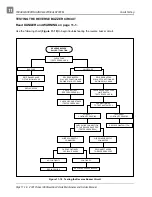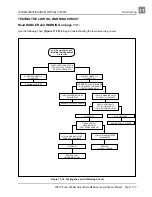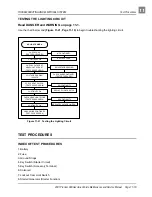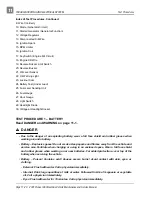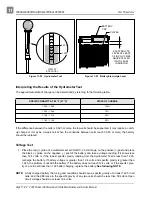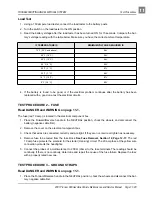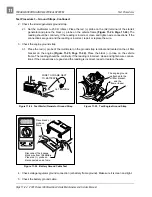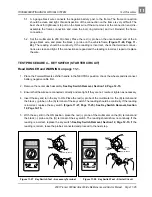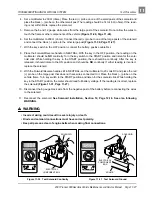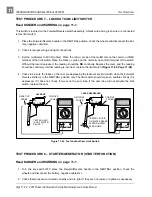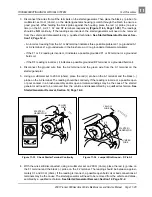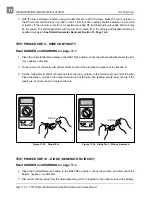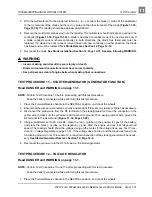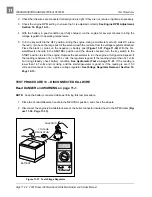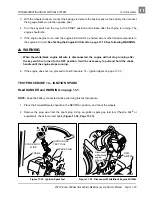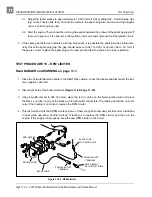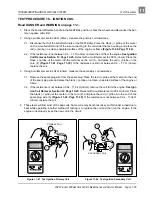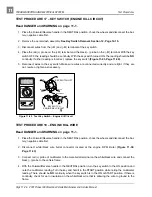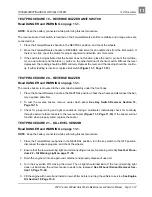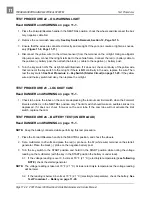
TROUBLESHOOTING AND ELECTRICAL SYSTEM
Test Procedures
2001 Pioneer 900 Gasoline Vehicle Maintenance and Service Manual Page 11-23
11
Load Test
1. Using a 160 ampere load tester, connect the load tester to the battery posts.
2. Turn the switch on the load tester to the ON position.
3. Read the battery voltage after the load tester has been turned ON for 15 seconds. Compare the bat-
tery’s voltage reading with the table below. Make sure you have the correct ambient temperature.
4. If the battery is found to be good, or if the electrical problem continues after the battery has been
replaced with a good one, test the electrical circuits.
TEST PROCEDURE 2 – FUSE
Read DANGER and WARNING on page 11-1.
The fuse (red 10 amp) is located in the electrical component box.
1. Place the Forward/Reverse handle in the NEUTRAL position, chock the wheels, and disconnect the
battery (negative cable first).
2. Remove the cover on the electrical component box.
3. Check that wires are connected correctly and are tight. If they are not, rewire or tighten as necessary.
4. Remove fuse to be tested from the fuse block. See Fuse Removal, Section 12, Page 12-17. The red
10 amp fuse protects the solenoid for the starter (cranking) circuit. The 20 amp fuse at the yellow wire
connection protects the headlights.
5. Connect the probes of a multimeter set to 200
Ω
(ohms) to the fuse terminals. The reading should be
continuity. If there is no continuity, determine and repair the cause of the fuse failure. Replace the fuse
with a properly rated new one.
TEST PROCEDURE 3 – GROUND STRAPS
Read DANGER and WARNING on page 11-1.
1. Place the Forward/Reverse handle in the NEUTRAL position, chock the wheels and disconnect the bat-
tery, negative cable first.
IF TEMPERATURE IS
MINIMUM VOLTAGE REQUIRED IS
70 °F (20 °C and above)
9.6V
60 °F (16 °C)
9.5V
50 °F (10 °C)
9.4V
40 °F (4 °C)
9.3V
30 °F (-1 °C)
9.1V
20 °F (-7 °C)
8.9V
10 °F (-12 °C)
8.7V
0 °F (-18 °C)
8.5V

